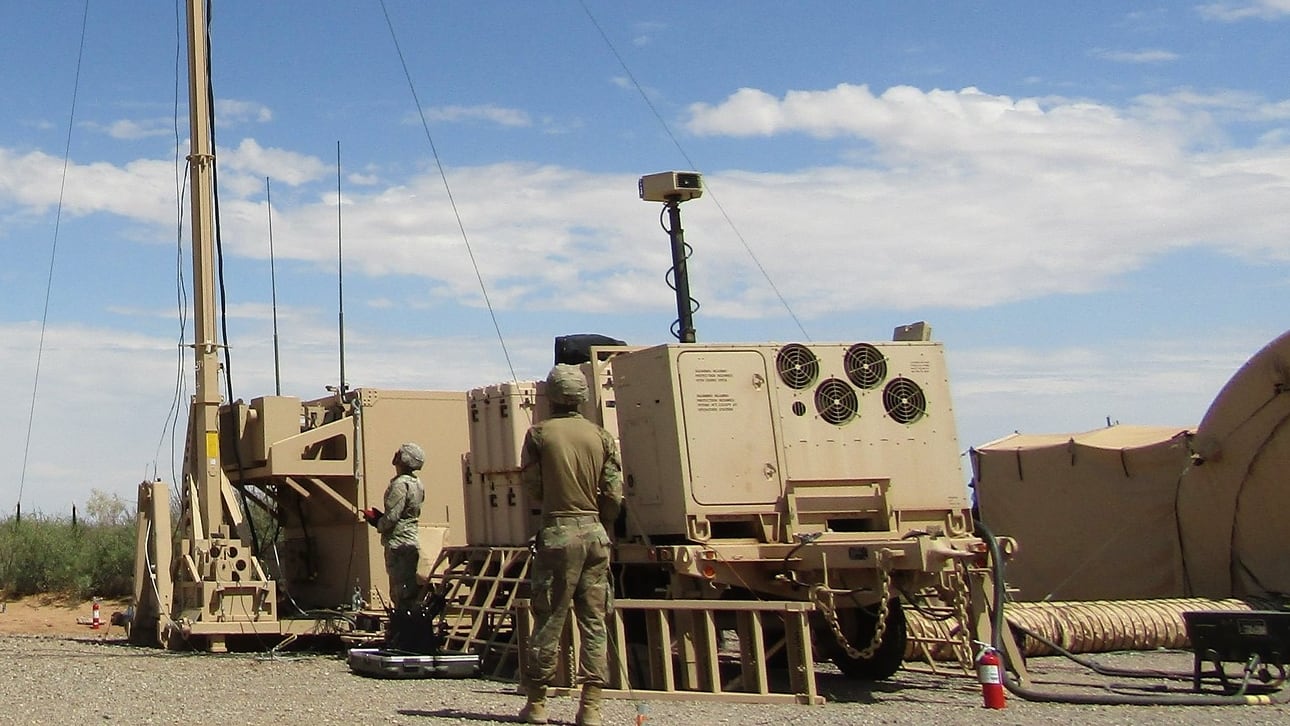Soldiers with a select air and missile defense battalion knocked down both a cruise missile and a ballistic missile nearly simultaneously in recent testing at White Sands Missile Range, New Mexico.
The task — while groundbreaking in its use of a new system of radars that the Army hopes will transform missile defense in the era of great power competition — likely wasn’t even the hardest thing they’ve had to do in recent months.
“What we’re really after for them is a stressing environment, because we can only do that in simulation,” said Col. Tony Behrens, Army capability manager and director of the Army AMD Command, during an Aug. 20 conference call with reporters. “We want to fly a significant load of targets at them at the same time.”
RELATED

Soldiers with the 3rd Battalion, 43rd Air Defense Artillery, commanded by Lt. Col. Hailey Bairu, just came off another crucial missile test not a week before this event.
That test, also at White Sands, focused on taking down two low-altitude targets nearly simultaneously, at distances of more than 50km, while part of their system was being jammed.
This time there wasn’t any jamming, but the tasks at hand were as demanding. That’s because the soldiers had to hit not just the low-altitude missile — which can cruise along behind mountain ridges, hiding itself before the strike — they also had to smack a ballistic missile coming down at the target from higher altitudes.
The ballistic missile, launched at the target from about 350km away, was hit at nearly the 90km mark, officials said.
They were able to do this with a combination of radars in a new configuration and with links and relays that weren’t in the arsenal of past missile defenders.
The setup paired AN/MPQ-64 Sentinel radars ahead of the Patriot missile systems’ radar to spot the incoming missiles, giving commanders a few more minutes to decide what to fire at which target and when.
At the center of that is the Integrated Battle Command System, hardware and software that allows the various parts to talk with each other.
It’s something they’ve done at a higher speed and volume in simulations, hence the stressors.
“The most stress is actually in simulation, literally hundreds of threats to discriminate and defeat in a short amount of time,” said Col. Phil Rottenborn, project manager for Program Executive Office Missiles and Space, during the conference call from New Mexico.
Brig. Gen. Brian Gibson, director of the Army’s Cross Functional Team–Air and Missile Defense, noted that the simulation ability allows for trainers to ramp up complexity quickly.
“We can stress the system and stress the soldier,” Gibson said during the call.
Soldiers with 3rd BN, 43rd ADA, which falls under 32nd Army Air and Missile Defense Command, fell in on the new system a year ago this month. But since then, a host of iterations and changes to tactics, techniques and procedures have changed how the Army will be doing missile defense in a more complex environment.
The aim is to protect soldiers, installations, allies and partners should a shooting war with a near-peer competitor such as China or Russia erupt.
That’s a far cry from a few mortars or RPGs hitting a remote forward operating base. Defense analysts roundly agree that should the militaries of the United States and either of those two nations square off, there will be a lot of missiles flying, more than the Army has seen in generations.
So, Behrens said, they’re not waiting to share the lessons being learned by 3rd BN. He is visiting the AMD community schoolhouses and briefing generals in the field to better understand and adapt to new realities, all while training upcoming AMD soldiers on the systems they now have.
“We don’t want to wait too long to start teaching this in the schoolhouse. I go into the schoolhouse personally to help them understand what the future of air defense will look like that,” Behrens said. “If we don’t employ this differently, then we’re not taking advantage of it.”
Now that the two live shoots have concluded, terabytes of data are set to be processed to decipher what worked and what didn’t, and what needs to be improved.
Another challenging flight test is scheduled for July 2021. Meantime, 3rd BN soldiers get only a slight break.
“We start working on that all over again in October,” Behrens said. New equipment training, TTP refinement, teaching what fixes were identified in the testing and adjusting for future tests. And if all goes as planned, the battalion is slated to be the first unit equipped with the system by mid-2022.
Todd South has written about crime, courts, government and the military for multiple publications since 2004 and was named a 2014 Pulitzer finalist for a co-written project on witness intimidation. Todd is a Marine veteran of the Iraq War.




